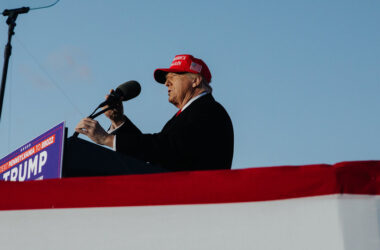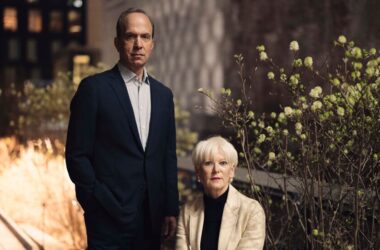Frank Shrontz, a widely admired executive who led Boeing in the 1980s and ’90s, a decade of spectacular growth in both its bottom line and its prestige as one of the world’s premier aerospace companies — a period very different from its current crisis of public confidence — died on May 3 at an assisted living home in Seattle. He was 92.
His son Craig confirmed the death.
Although he spent the bulk of his career at Boeing, Mr. Shrontz, who had a law degree and an M.B.A., was an unlikely choice to lead a company that prided itself on letting engineers and not businessmen set the pace.
Yet during his time at the helm — he became president in 1985, chief executive in 1986 and chairman of the board in 1988 — he led Boeing through a growth market, a recession and a thorough restructuring that produced one of the most successful commercial aircraft ever put into service, the 777.
Mr. Shrontz was known as a calm hand at the company till, with an everymanager’s feeling for the rank and file. He walked the floors at the factories around Boeing’s headquarters in Seattle, and he regularly met with groups of employees to hear their views and gather ideas.
“Frank Shrontz is who I think about when people ask me who the Boeing C.E.O. needs to be,” Richard Aboulafia, the managing director of AeroDynamic Advisory, said in a phone interview.
His tenure started on a high note in the late 1980s, a boom time in commercial aircraft sales. But then came a pair of challenges: the recession of 1990 and 1991 and the end of the Cold War, which punched a hole in Boeing’s defense business.
Mr. Shrontz saw the downturn as an opportunity. Among other initiatives, he pushed Boeing into the space industry, landing a contract to build parts of the International Space Station. He also created teams drawn from different parts of the company — engineers, designers and manufacturing specialists — to develop and build aircraft, while investing heavily in what was then a novel technology: computer-assisted design.
The first major result of Mr. Shrontz’s restructuring was the 777. Designed from the ground up, it went from conception to production in just five years, astounding the industry. And it cost just $4 billion to develop, a figure dwarfed by the hundreds of billions the company has earned from it.
Yet he insisted that success had not gone to his head, or to Boeing’s.
“I don’t think any private company can consider itself to be bulletproof,” he told The Los Angeles Times in 1991. “I think as soon as you start getting complacent in that regard, you’re heading for serious problems. We run scared, and we think that’s the way it should be.”
Frank Anderson Shrontz was born on Dec. 14, 1931, in Boise, Idaho, the son of Thurlyn and Florence (Anderson) Shrontz. His father owned the only licensed Schwinn bicycle retailer in the city.
He studied law at the University of Idaho, graduating in 1954 and, after spending two years in the Army, enrolled in Harvard Business School. He received his M.B.A. in 1958, the same year he joined Boeing.
He married Harriet Ann Houghton in 1954. She died in 2012. Along with his son Craig, he is survived by another son, David, and two grandchildren. A third son, Richard, died in 2017.
Mr. Shrontz left Boeing in 1973 to join the Department of Defense, where he served as an assistant secretary of the Air Force and then as an assistant secretary of defense. He returned to Boeing in 1977, at which point he was singled out as a potential top executive.
He was assigned to run three of the company’s busiest programs, overseeing the 707, 727 and 737 jetliners. While many people in the company were focused on the glamorous 747, Boeing’s massive intercontinental jetliner, he invested heavily in the 737, a smaller workhorse of a plane — and his bet paid off, as domestic travel grew in the early 1980s, both in the United States and in foreign markets.
Mr. Shrontz stepped down as chief executive and president in 1996, and as chairman a year later. His departure coincided with another internal revolution at Boeing: In 1997 the company bought one of its major rivals, McDonnell Douglas, and in 2001 it moved its headquarters to Chicago from Seattle. (It is now based in Northern Virginia.)
The company had long relied on internal hires to occupy its upper ranks, but the influx of McDonnell Douglas executives changed everything. A new emphasis on profits and cost-cutting led to decades of underinvestment in safety and engineering, a change documented in the 2022 Netflix documentary “Downfall: The Case Against Boeing.” The result, critics say, is a company very different from the one Mr. Shrontz ran.
In recent years Boeing has suffered a series of accidents and disasters. Within six months in 2018 and 2019, two Boeing 737 Max airliners crashed, one in Indonesia and the other in Ethiopia, killing 346 people.
Both crashes were traced to misfiring anti-stall sensors. A 2020 investigation by the U.S. House of Representatives found that the company had dismissed employee concerns about the sensors, and in 2021 Boeing agreed to pay $2.5 billion to settle fraud charges.
More accidents followed, including an incident in January in which a door plug on an Alaskan Airlines 737 Max blew out. (No one was seriously injured.) On May 14 the Department of Justice found that the company had violated the terms of the 2021 settlement.
Earlier this year Boeing’s chief executive, Dave Calhoun, and Larry Kellner, the chairman of the board, announced that they would step down.
Since his retirement, Mr. Shrontz had rarely spoken directly about the decline of his old company’s reputation. But his views were not hard to parse from interviews.
“There was a lot of pride among the people,” he said of Boeing in an interview with The Puget Sound Business Journal in 2015. “It was kind of a family feeling, a feeling you don’t find at modern companies where people are much more likely to hire in, stay for a few years and move on.”



